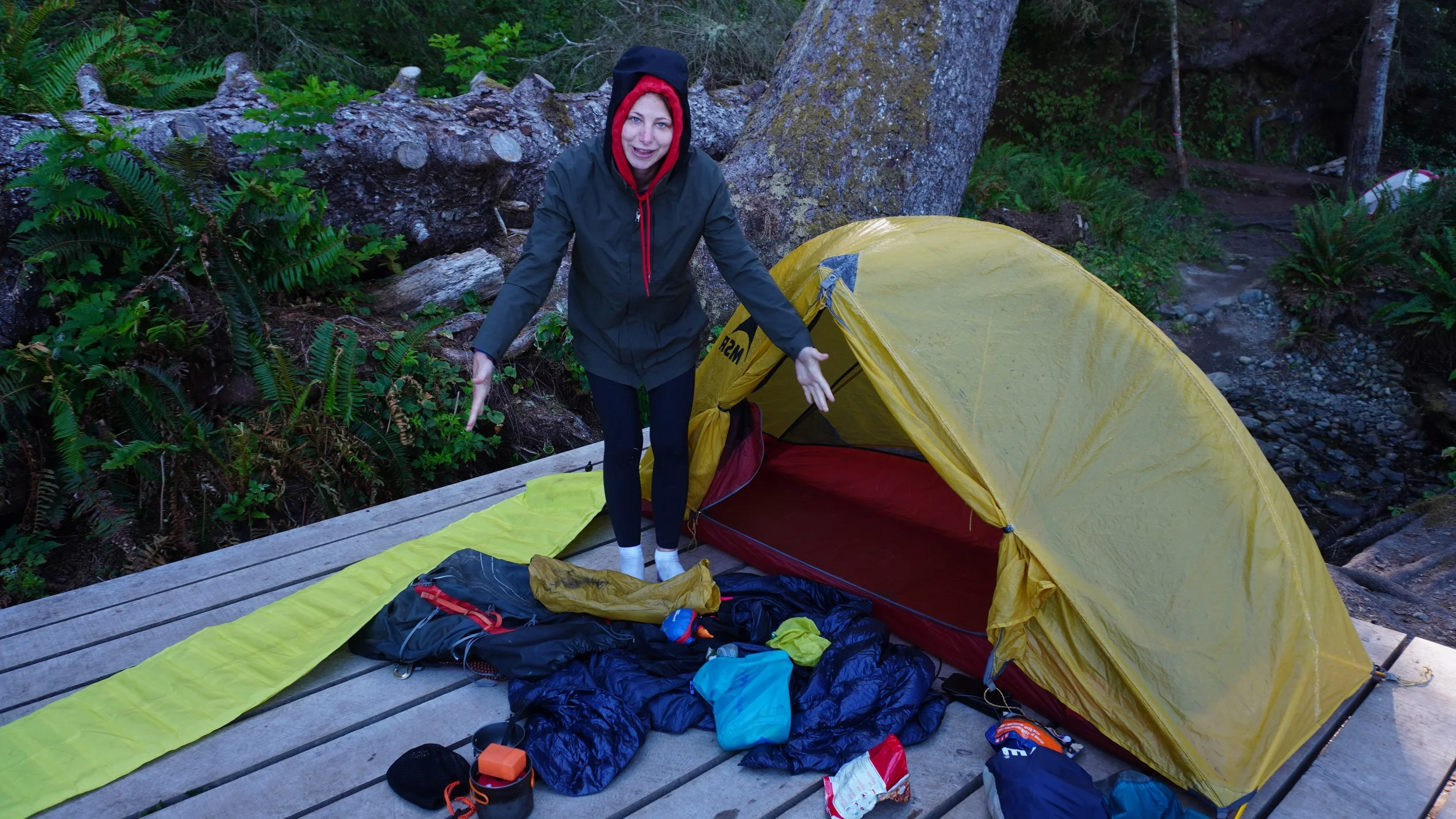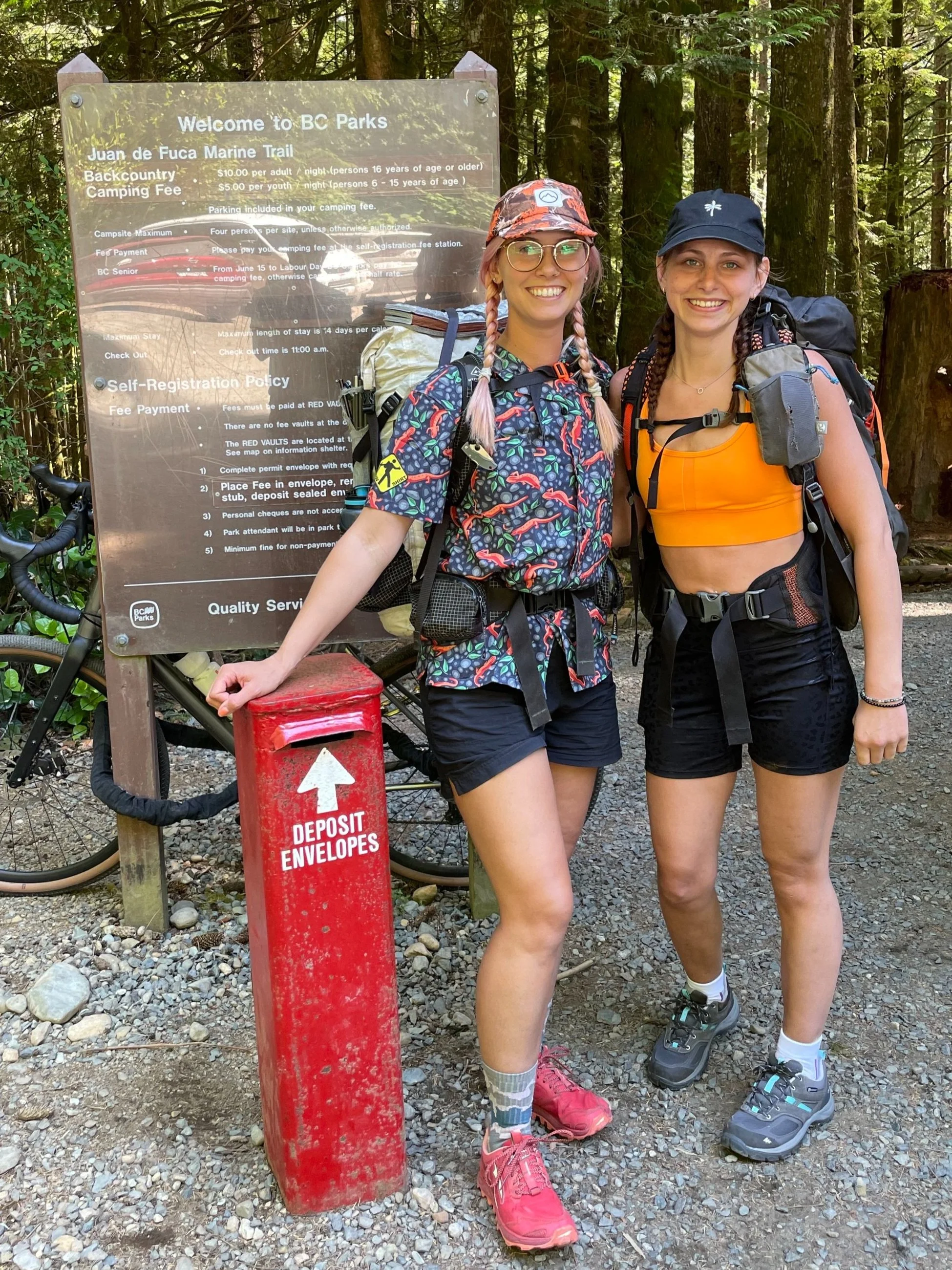How to Hike the Juan de Fuca Trail: A Complete Guide (VIDEO inlcuded)
The Juan de Fuca Trail is a 47 km coastal gem on Vancouver Island, British Columbia. Hugging the rugged west coast, this trail weaves through old-growth forests, over rocky beaches, past waterfalls, and up steep wooden staircases reclaimed by nature. It’s a breathtaking adventure for any backpacker, and here’s how to make the most of it!
Getting to the Juan de Fuca Trail
To reach the trail from Vancouver:
Take the Tsawwassen ferry to Schwartz Bay in Victoria.
Drive 2 hours through winding forest roads to Botanical Beach (northern terminus) or about 1 hour to China Beach (southern terminus).
Parking is available, but avoid leaving valuables in your vehicle due to potential break-ins.
Shuttle services are available and should be booked in advance if you don’t have a car.
Permits
Good news! The Juan de Fuca Trail doesn’t require advanced permits like the West Coast Trail. Instead:
Fill out a backcountry camping permit at the trailhead.
Deposit $10 per night into the drop box.
Keep the permit stub with you just in case.
Campsites and Amenities
Each campsite is equipped with:
Bear boxes for storing food and scented items (no need to hang your food!).
Pit toilets, often stocked with toilet paper and hand sanitizer.
Plenty of flat tent spaces, especially during the quieter shoulder seasons. Most sites now have wooden tent platforms, so if you’re using a trekking pole tent, this may be a little tricky. There were lots of rocks to help with pitching though.
Trail Navigation
The trail is well-marked with:
Wooden kilometer posts.
Cairns and buoys marking beach exits back into the forest.
Flagging tape clearly marking rerouted sections.
Pay close attention during beach walks where the trail reenters the forest—it’s not always obvious!I downloaded the map from AllTrails, but rarely needed to use it
Rae with all her gear
Trail Highlights & Campsites
Day 1: China Beach to Bear Beach (12 km)
Terrain: Moderate with some climbs and muddy sections.
Campsite: Bear Beach offers flat tent spots, a bear box, and a pit toilet.
Highlights: Stunning coastal views and a serene beachside campsite.
Day 2: Bear Beach to Chin Beach (12 km)
Terrain: Challenging with steep climbs, descents, and slippery sections.
Campsite: Chin Beach provides ocean views, a bear box, and a pit toilet.
Highlights: Rugged terrain with rewarding vistas.
Day 3: Chin Beach to Little Kuitshe Creek (10 km)
Terrain: Moderate with fewer climbs, featuring forest paths and beach sections.
Campsite: Little Kuitshe Creek is a serene forest site with access to a beautiful beach.
Highlights: Peaceful forested areas and beachside relaxation.
Day 4: Little Kuitshe Creek to Botanical Beach (13 km)
Terrain: Mix of forested pathways, boardwalks, and rocky shoreline trails.
Highlights: Exploring tidal pools at Botanical Beach and celebrating the completion of the trail.
Tides and Trail Conditions:
Always check tide charts before setting out. They’re posted at trailheads—snap a photo!
The trail can be muddy, rooty, and steep, especially during wet seasons. Dry weather makes the journey more manageable.
Transportation Tips
Hitchhiking is common and easy along the main road, with friendly locals and surfers happy to offer rides.
Shuttles are available but operate on limited schedules, so plan ahead if you prefer a more structured option. The schedules are usually posted at the trailheads, so call ahead to book a space.
Rae at Sombrio Beach
Why You’ll Love the Juan de Fuca Trail
The Juan de Fuca Trail is a perfect mix of challenge and reward. From rugged terrain to serene campsites, this hike rejuvenates the soul with the sound of crashing waves, the smell of ocean air, and breathtaking sunsets. Whether you’re a seasoned hiker or taking on your first multi-day trek, this trail is an unforgettable experience that will leave you wanting more.
Grab your pack, lace up your boots, and get ready for an adventure you’ll never forget!
Rae and me at the start of our adventure!
The end to an excellent adventure! We had such a fun time on this trail and would definitely do it again.



